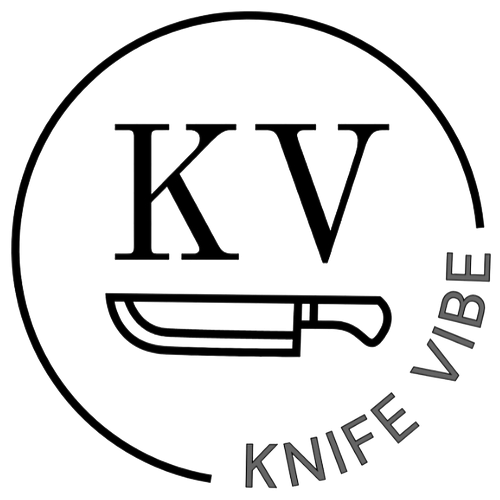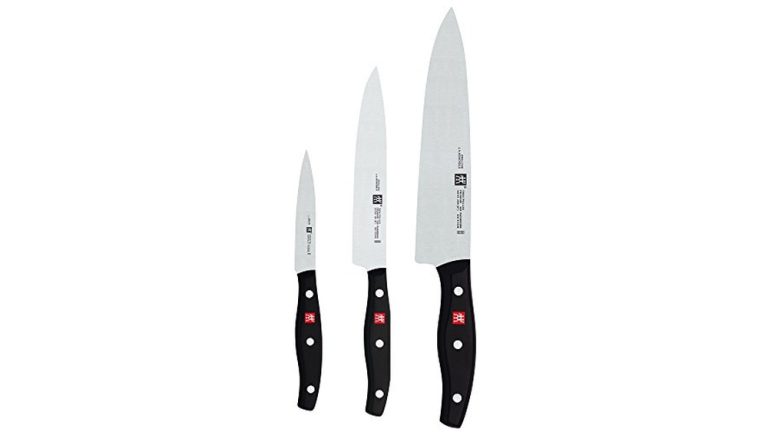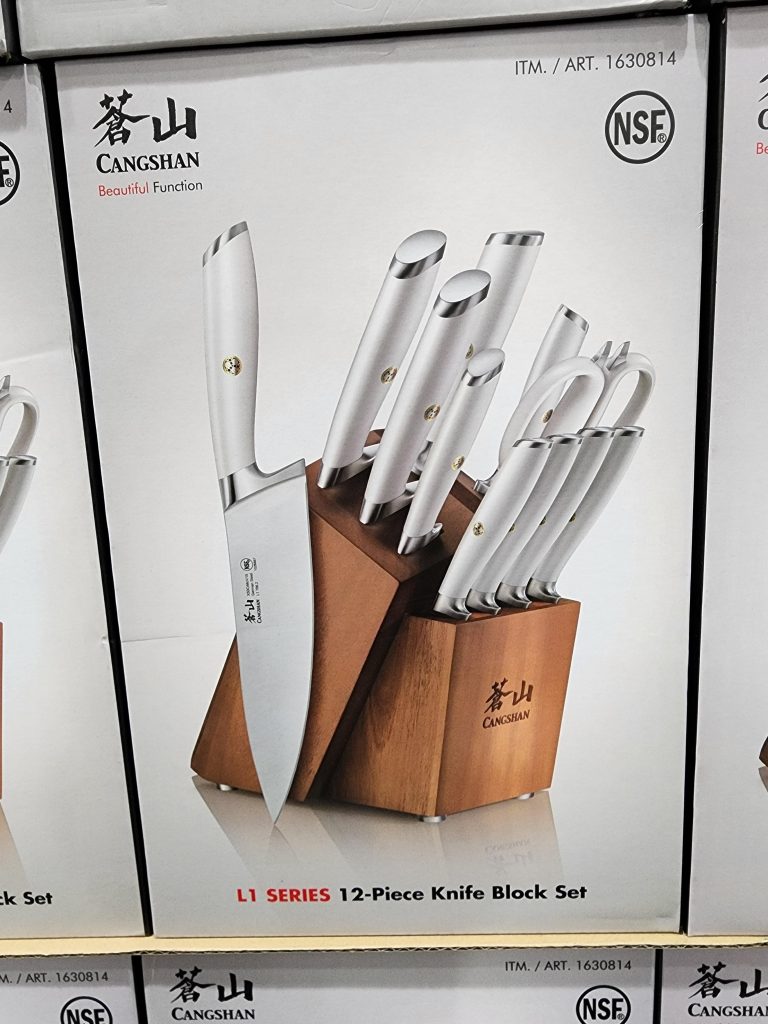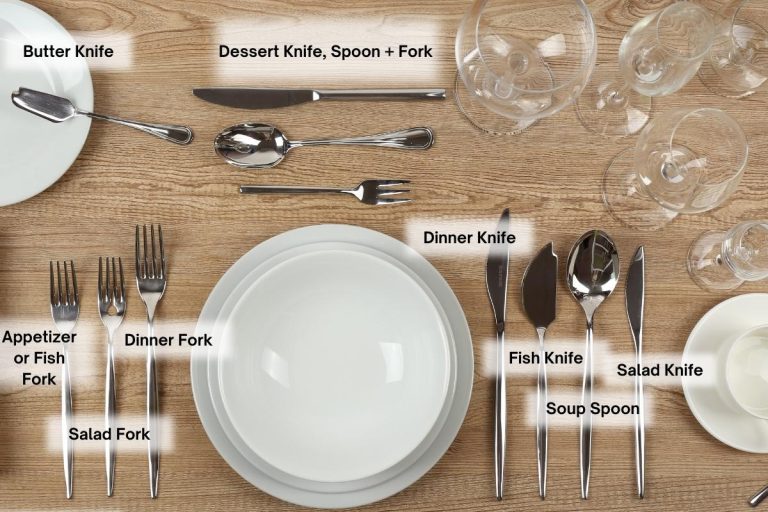Nakiri Knife Vs Chef Knife: Which One Reigns Supreme?
Choosing the right kitchen knife can be challenging. Nakiri knives and chef knives are popular options.
Nakiri knives and chef knives both have unique features. Each serves different culinary purposes. Knowing their differences can help you decide which fits your cooking needs. Nakiri knives are known for their thin, straight blades, ideal for slicing vegetables. Chef knives, on the other hand, are versatile with their broad, curved blades, perfect for various tasks.
Understanding these differences ensures you pick the right tool for your kitchen. Let’s explore how each knife can enhance your cooking experience.
Design And Structure
Understanding the design and structure of Nakiri and Chef knives helps in choosing the right one. Each knife has unique features suited for specific tasks. This section discusses their design aspects.
Blade Shape
The Nakiri knife has a straight, flat blade. This design ensures clean, even cuts. It is perfect for chopping vegetables. The Chef knife has a curved blade. This curve allows for a rocking motion. It’s versatile for slicing, dicing, and chopping.
Blade Length
Nakiri knives typically have a shorter blade. The length ranges from 5 to 7 inches. This makes it easy to handle. Chef knives have a longer blade. The length ranges from 8 to 12 inches. This extra length offers more cutting surface. It provides better control for various cutting techniques.
Material And Build Quality
When choosing between a Nakiri knife and a chef knife, material and build quality play an important role. Each knife’s performance and durability depend on the materials used. Let’s explore the different steel types and handle materials for each knife.
Steel Types
Nakiri knives often use high-carbon stainless steel. This steel resists rust and holds a sharp edge longer. Some Nakiri knives also use traditional carbon steel. This type needs more care but offers superior sharpness.
Chef knives use various steel types. High-carbon stainless steel is common for its balance of strength and rust resistance. Some chef knives use German or Japanese steel. German steel is tough and durable. Japanese steel is harder and sharper.
Handle Materials
Nakiri knife handles are usually made from wood or synthetic materials. Wooden handles offer a traditional look and a comfortable grip. Synthetic handles are more durable and easier to clean. Both options provide good balance and control.
Chef knife handles come in a wide range of materials. Wood, plastic, and composite materials are popular choices. Wooden handles are elegant and provide a natural feel. Plastic handles are lightweight and resistant to moisture. Composite handles combine the best of both worlds, offering durability and comfort.
In summary, choosing the right knife depends on your preferences for steel type and handle material. Both Nakiri and chef knives offer options to suit different needs and styles.
Cutting Performance
Choosing the right knife for your kitchen can be tricky. A Nakiri knife and a Chef knife both excel in different tasks. Cutting performance is one key aspect where these knives differ. Let’s dive into the specifics.
Vegetable Cutting
The Nakiri knife shines in vegetable cutting. Its straight blade makes it ideal for chopping vegetables. You can make precise cuts with minimal effort. The flat edge ensures full contact with the cutting board. This helps in achieving uniform slices. No rocking motion is needed, unlike with a chef knife.
Chef knives can also handle vegetables well. They have a curved blade which is useful for a rocking motion. This is good for herbs and smaller vegetables. But, it may not be as efficient for larger vegetables. The chef knife is versatile but not specialized.
Meat And Fish Cuttinge
When it comes to cutting meat and fish, the chef knife excels. Its pointed tip and versatile blade make it suitable for various tasks. You can easily cut through meat fibers and bones. The chef knife offers better control for filleting fish too.
Nakiri knives are not designed for meat and fish. They lack the pointed tip and flexibility needed. Their straight edge is not ideal for cutting through meat fibers. If your primary focus is meat, the Nakiri may not be your best choice.
| Task | Nakiri Knife | Chef Knife |
|---|---|---|
| Vegetable Cutting | Excellent | Good |
| Meat Cutting | Poor | Excellent |
| Fish Cutting | Poor | Excellent |
Ease Of Use
When deciding between a Nakiri knife and a chef knife, ease of use is crucial. Both knives have unique features that cater to different users. Let’s explore how each performs in terms of balance, weight, comfort, and grip.
Balance And Weight
A Nakiri knife usually has a lighter feel. Its weight is often evenly distributed. This makes chopping vegetables quick and easy. On the other hand, a chef knife is heavier. The weight is often towards the blade. This helps in cutting through tougher foods. The heavier weight can tire your hand faster.
Comfort And Grip
Comfort and grip are important for long cooking sessions. Nakiri knives typically have a straight handle. This can be less comfortable for some users. Chef knives often come with ergonomic handles. These handles fit well in the hand. They reduce strain during prolonged use. Different materials are used for grips. Wood and synthetic materials are common. The choice depends on personal preference.
Maintenance And Durability
When choosing between a Nakiri knife and a Chef knife, understanding the maintenance and durability is crucial. Both knives have unique characteristics that affect their upkeep and lifespan. This section will explore the sharpening needs and longevity of both knives to help you make an informed decision.
Sharpening Needs
Nakiri knives have a straight blade edge, making them easier to sharpen. The flat edge allows for consistent contact with the sharpening stone. This results in a more even and accurate sharpening process.
On the other hand, Chef knives have a curved blade. This curve requires a rocking motion during sharpening. This process can be more challenging and time-consuming, especially for beginners. The curved blade can also lead to uneven sharpening if not done correctly.
Longevity
The longevity of a knife depends on its material and usage. Nakiri knives are typically made from high-carbon steel. This material is known for its sharpness and edge retention. However, high-carbon steel is prone to rust and requires regular maintenance.
Chef knives are often made from stainless steel. Stainless steel is more resistant to rust and stains. This makes it more durable with less frequent maintenance. Yet, it may not hold its edge as well as high-carbon steel.
| Aspect | Nakiri Knife | Chef Knife |
|---|---|---|
| Sharpening | Easier due to straight edge | More challenging due to curved edge |
| Material | High-carbon steel | Stainless steel |
| Rust Resistance | Low | High |
| Edge Retention | High | Moderate |
In summary, Nakiri knives require more frequent maintenance due to rust issues. Chef knives are more durable but need careful sharpening to maintain their edge.
Price And Value
Choosing between a Nakiri knife and a chef knife can be challenging. One key factor is the price and value each knife offers. Let’s break down the costs and what you get for your money.
Cost Comparison
Both Nakiri knives and chef knives come in a range of prices. Here’s a quick comparison of the cost:
| Knife Type | Price Range (USD) |
|---|---|
| Nakiri Knife | $30 – $200 |
| Chef Knife | $20 – $300 |
Nakiri knives tend to be a bit pricier on average. Chef knives, with their broader range, can be found at lower starting prices. This makes chef knives more accessible for beginners.
Value For Money
When considering value, it is important to look at quality and usage. Nakiri knives are specialized for chopping vegetables. They offer excellent precision and ease of use. This makes them a good investment for veggie enthusiasts.
Chef knives, on the other hand, are versatile. They can handle various tasks, from chopping to slicing meat. This versatility adds to their value. For someone who cooks a variety of dishes, a chef knife can be more valuable.
Here are some points to consider:
- Nakiri Knife: Best for vegetable preparation. High precision. Specialized use.
- Chef Knife: Versatile. Suitable for various tasks. Often more cost-effective.
Ultimately, the choice depends on your cooking style and needs. A Nakiri knife might be worth the investment if you cook lots of vegetables. A chef knife offers more value for those with diverse cooking needs.
Best Use Cases
Choosing between a Nakiri knife and a chef knife can be challenging. Each knife has unique strengths. Understanding their best use cases can help you decide which one fits your needs.
Home Cooking
In home kitchens, the Nakiri knife excels at cutting vegetables. Its straight blade is perfect for chopping. It creates clean, even slices. This makes it ideal for salads and stir-fries.
The chef knife is more versatile. It can handle various tasks. From slicing meat to dicing onions, it does it all. Its curved blade allows for rocking motion. This makes it easier to cut different ingredients.
Professional Kitchens
In professional kitchens, both knives have their places. Chefs use the Nakiri knife for precision vegetable work. Its design reduces fatigue during long prep sessions.
The chef knife is the workhorse. It handles a wide range of tasks. Meat, vegetables, herbs – nothing is too tough. Its versatility saves time and space in busy environments.
| Knife | Best Use |
|---|---|
| Nakiri Knife | Vegetable chopping, precision cuts |
| Chef Knife | Multi-purpose, meat slicing, herb mincing |
Understanding these use cases helps you choose the right knife. Whether for home cooking or professional kitchens, each knife has its strengths. Select the one that suits your cooking style.

Credit: prudentreviews.com
Frequently Asked Questions
What Is A Nakiri Knife Used For?
A Nakiri knife is primarily used for chopping and slicing vegetables. It has a straight blade edge, making it perfect for precise cuts.
How Does A Nakiri Knife Differ From A Chef Knife?
A Nakiri knife has a straight blade, ideal for vegetables. A chef knife has a curved blade, suitable for various tasks.
Is A Nakiri Knife Better For Vegetables?
Yes, a Nakiri knife is better for vegetables due to its straight edge. It allows for clean and precise cuts.
Can A Chef Knife Replace A Nakiri Knife?
A chef knife can handle vegetables but may not be as precise. A Nakiri knife excels in vegetable preparation.
Conclusion
Choosing between a Nakiri knife and a Chef knife depends on your needs. Nakiri knives excel at chopping vegetables with precision. Chef knives offer versatility for various tasks in the kitchen. Consider your cooking style and preferences. Both knives bring unique benefits to your culinary experience.
Invest in the right knife for your cooking habits. Your kitchen will thank you. Happy cooking!
